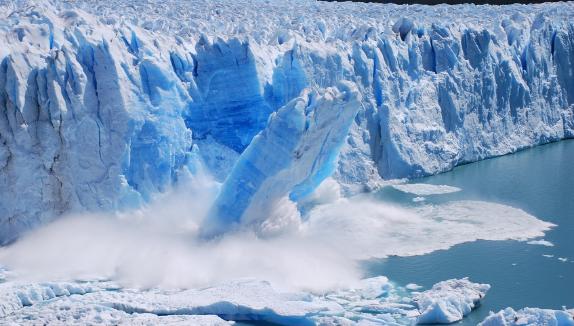Due to global warming, flood-like water outbursts from ice-dammed glacial lakes worldwide happen earlier in the year and originate from higher areas. This is shown on the basis of observation data since 1900 by a new study with the participation of the Potsdam Institute for Climate Impact Research (PIK), which is published in the scientific journal Nature. At the same time, however, these so-called outbursts are also becoming smaller.

“When glaciers accumulate water from precipitation and glacial melt in lakes at their edges, the dams can become unstable and eventually break, suddenly releasing the the accumulated water in potentially dangerous glacial lake outbursts,” explains Lisa Luna from PIK and co-author of the study.
“These floods have repeatedly claimed lives, destroyed infrastructure and farmland, and subsequently blocked important transport routes for months, particularly because they are difficult to predict,” she adds.
In their study, the researchers characterised more than 1,500 glacial lake outbursts recorded in mountain regions worldwide since 1900 based on water volume, peak discharge, timing and source lake elevation. This enabled them to estimate trends over time.
“Accelerated glacial melt in recent decades has resulted in the most extreme glacial lake outbursts becoming smaller in terms of volume and peak discharge. However, in the high mountains of Asia floods now occur about eleven weeks earlier in the year than in 1900, in the European Alps ten weeks earlier and in northwestern North America seven weeks earlier.
“We have also found that there are now lakes with documented outbursts at higher altitudes. In the Andes, Iceland and Scandinavia they are now on average 250 to 500 metres higher than 120 years ago,” says Georg Veh from University of Potsdam, author of the study.
Knowing these temporal changes could provide useful information to temporarily close roads or bridges along rivers, for example, to reduce damage.
Global warming could leave a number of regions with small glaciers, such as the European Alps, Scandinavia and Canada’s British Columbia, mostly ice-free by the end of the 21st century. Others, however, such as Patagonia or Alaska, could still have large glaciers beyond 2100 and continue to be able to accumulate meltwater.
The researchers recommend monitoring glacier-dammed lakes in these regions and equipping downstream river sections with early warning systems to prevent or at least mitigate future flood disasters.
